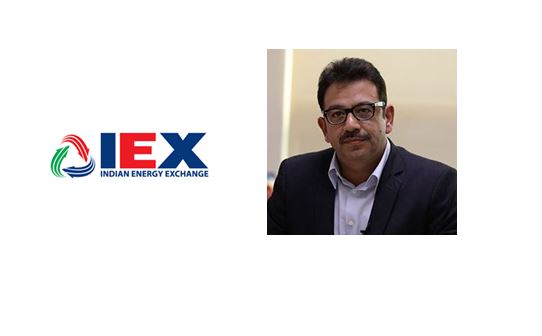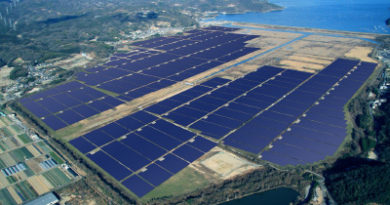“There Is Still A Huge Unmet Compliance On RPO targets vis-à-vis achievements”

Indian Energy Exchange (IEX) is the first and largest energy exchange in India providing a nationwide, automated trading platform for physical delivery of electricity, Renewable Energy Certificates and Energy Saving Certificates. The exchange platform enables efficient price discovery and increases the accessibility and transparency of the power market in India while also enhancing the speed and efficiency of trade execution. Recently, at a forum for Climate Change hosted by the Environment minister, we also heard many corporate leaders talk about the need for an efficient trading market for renewable energy, besides carbon credits.
Rohit Bajaj, Head and Senior Vice President(Business Development) responds to the issues in the Indian market currently.
- What is the importance of RECs? How does it help with RPOs?
The Central Electricity Regulatory Commission (CERC) introduced Renewable Energy Certificates (RECs) mechanism in the year 2010 with an aim to ease the purchase of renewable energy by the state utilities and obligated entities, including the states which are not well endowed with RE sources. Through RECs, obligated entities such as distribution utilities, open access consumers and captive power plants are able to meet their RPO compliance requirements set by the regulator. Over the last decade, REC Market has become one of the key avenues through which these entities have been able to leverage to fulfill RPO targets in the most efficient and competitive manner. The market platform has also greatly helped in increasing the renewable energy penetration in the country’s energy mix.
- What is reason behind APTEL’s decision to postpone the trading? Latest updates on the decision.
In June 2020, CERC had issued an order regarding revision in the floor and forbearance prices of RECs. According to the order, the floor price of both solar and non-solar RECs was reduced to zero from earlier Rs 1000 and forbearance price was reduced to Rs 1000 per MWh from earlier Rs 2400 per Mwh for solar and Rs 3000 per Mwh for non-solar RECs. Some of the green power generators and industry associations resisted new reduced pricing proposed by the CERC and had been keen on continuation of the old pricing. These stakeholders thus filed an appeal with Honorable APTEL for the revocation of the order claiming that reduced pricing will lower their financial realization. Taking a note of this, APTEL issued an order staying trade in the REC Market in early July for four weeks which has since been continuing and the trading has not taken place over the last four months. The latest update is that although the hearing in the matter is completed, the final APTEL order is much awaited to enable resumption of trade in the REC Market.
- Discuss how bulk purchasers have their requirement of RPOs.
The bulk purchasers who opt for procuring electricity through power generators directly instead of purchasing through their respective distribution utility are obliged to fulfill their RPO compliance targets. They can either enter into power purchase agreements with green power generators or buy RECs through the market as per their RPO compliance requirements. Since the RECs provide greater flexibility in terms of planning and meeting required RPO targets in the most flexible and competitive manner, the bulk purchasers thus greatly prefer this market mechanism.
- Data on the expected volumes in REC trading, as they existed before they were stopped, and expectations going forward.
In the current financial year 2021, the trading in the REC market was very sub-dued for the initial three months i.e. April, May and June largely due to CoVID-19 pandemic and the fact that industrial consumption had come to a halt and also there was overall contraction in the demand for power. This has adversely impacted the market and resulted in the trading of only about seven lakh RECs so far.. However, in fiscal year 2020, IEX witnessed the trade of about 60 lac RECs implying an average monthly trade of about 5 lac RECs. With power demand and energy consumption now accelerating, we may see the trade this year surpass the previous year numbers, provided the REC trading is resumed in November 2020 without any further delays.
- As RE supply itself goes up at energy exchanges, won’t that lead to drop in demand for REC’s? Sales have already dropped sharply between 2018-19 and 2019-20, as it is.
The regulators have bene gradually increasing the RPO targets over the years and also have been enforcing strict and timely compliance. Therefore, there is a compelling need to have multiple avenues available that can help the obligated entities to fulfil their allotted targets. Most importantly, there is still a huge unmet compliance when we measure RPO targets vis-à-vis achievements and many obligated entities are still not achieving their targets and some are not even participating in the market. The newly commenced Green Markets on the Exchange and the REC Market both enable the obligated entities to fulfill RPO compliance in the most competitive manner. For integrated energy and RPO, the green market is appropriate and REC market is suitable when it comes to meeting RPO in a standalone way. Thus, the two market segments indeed complement each other in a very nice way and serve the requirements of the market participants in their own unique ways. Going forward, both market segments must co-exist in meeting larger renewable energy aspirations.
- Globally, how has the REC model evolved? In India, who certifies the validity and authenticity of REC’s?
The concept of RPOs is well-accepted and has been widely used globally, especially in developed countries since a long time now. Over the years, developed countries have witnessed a significant increase in the share of renewable energy to the extent that it is now traded at par with conventional power on the exchange platforms. Owing to the maturity and expansion of renewable energy markets in these countries, the respective governments have even removed RPO. In India, while we have made significant progress in the last few years, we are still working towards increasing the share of green power and have even set steep target of increasing the renewable installed capacity to 450 GW by 2030. Therefore, RPO and REC become an important tool to accelerate the growth of renewable energy by allowing obligated and even voluntary entities to buy green power.
CERC has designated National Load despatch Centre (NLDC) as Central Agency for registration, repository, and other functions for implementation of REC framework at national level. The Central Agency (NLDC) has been authorized to issue RECs to renewable energy generators for specified quantity of electricity injected into the grid. The metering of quantum of renewable energy injected into the grid is approved and recorded through energy accounting by SLDC. NLDC issues the certificates equivalent to the amount of electricity injected into the grid as certified by the SLDC. RECs are then ultimately traded only on the power exchanges as also mandated under the framework notified by the Honorable CERC.




